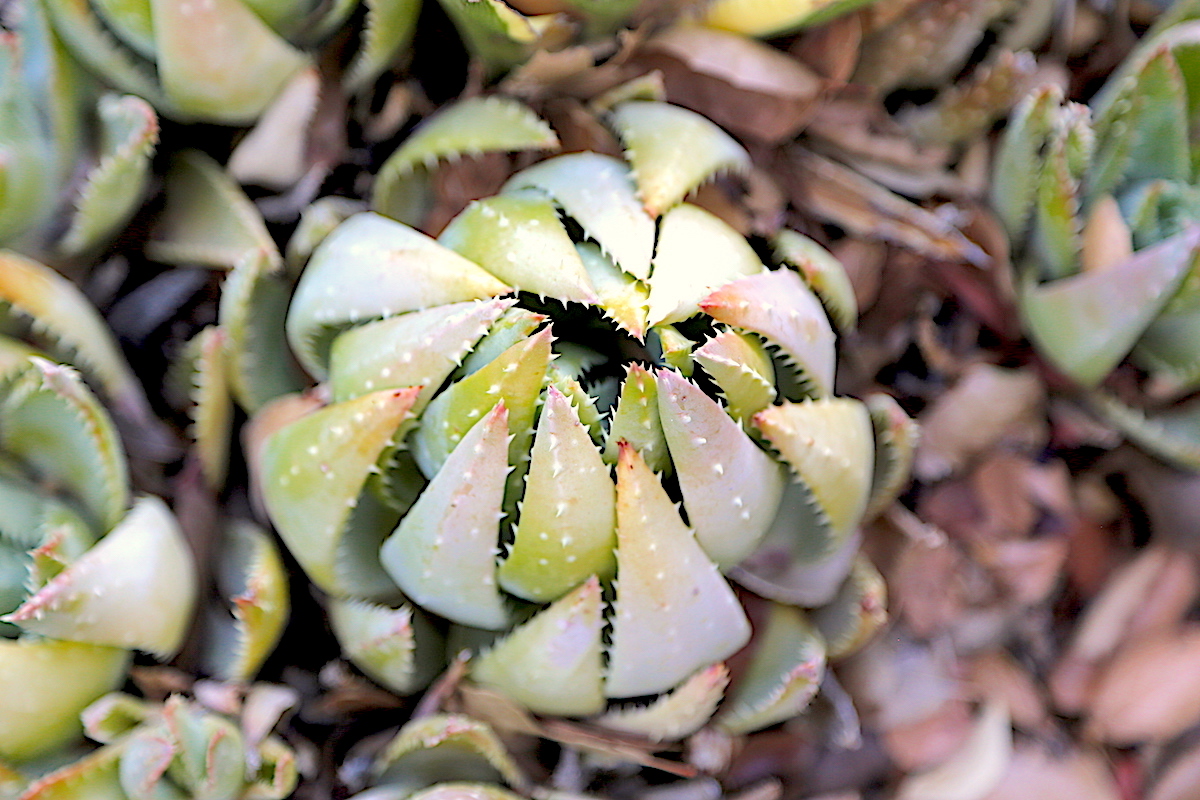
Tina’s Tips & 16 Things Your Succulents Want You to Know
UPDATE, Nov. 2019: While they last, Tina's selling large echeverias via mail-order at bargain prices (click to see photos). As a thank-you, she's giving an additional 25% discount to my newsletter subscribers. Subscribe on my Home page.
Now on YouTube: How do you prune, replant and propagate big, beautiful echeverias? In How to Slice and Re-root Echeverias (4:16), dirt flies as Tina demonstrates. Whack!
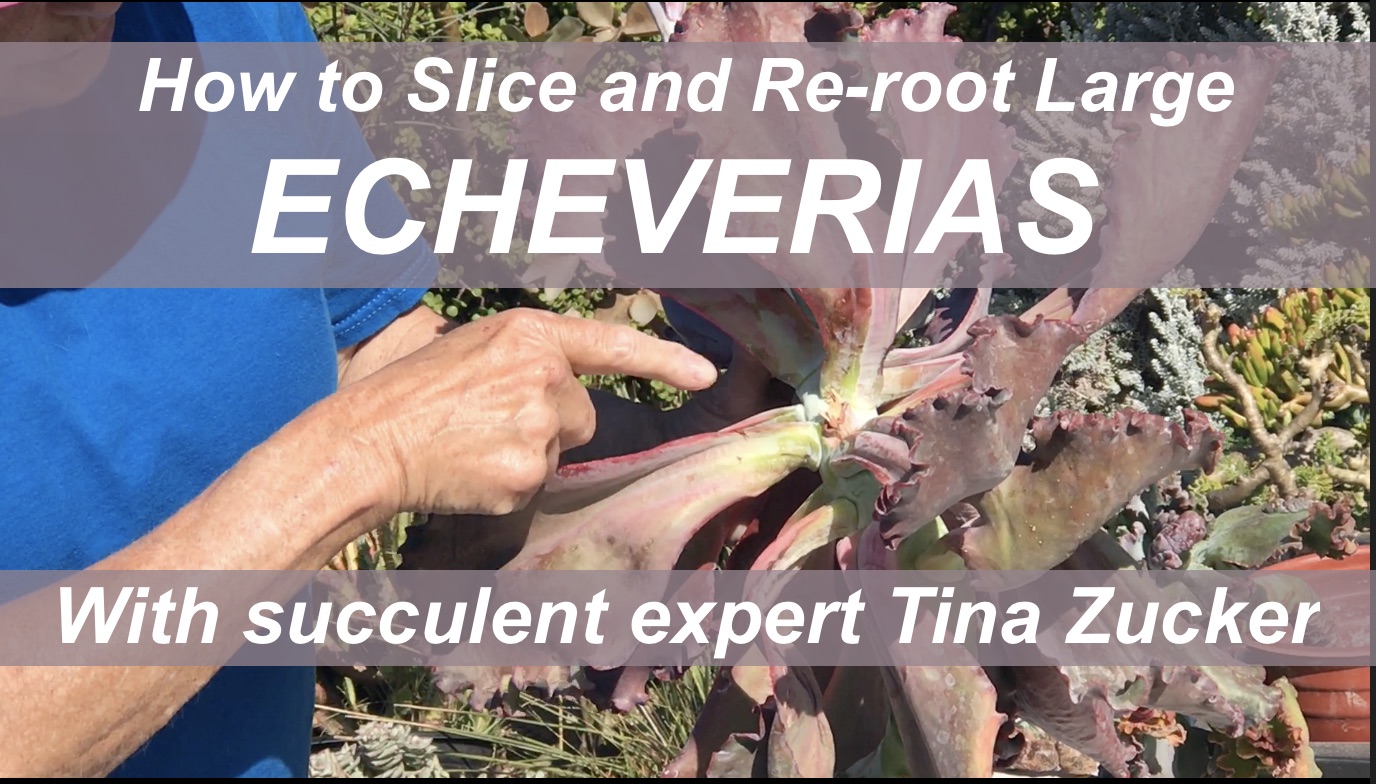
YouTube Echeveria video with Tina Zucker
"It's Time," Tina Says
Tina Zucker's business, Succulent Gardening, specializes in rare and unusual varieties. "I go for the unique, different and uncommon," she says. In addition to Cactus & Succulent Society of America shows and sales, Tina sells online. Despite not advertising, she has a thriving mail-order nursery.
But "it's time," Tina says, for her to retire and sell her business. This is a golden opportunity for an enterprising succulent enthusiast or nursery with adequate space (she has several greenhouses of plants). Email: Succulentsus@gmail.com. Note: She is NOT selling her home or moving.
Tina's Tips
You don't need to be a scientist to be successful with succulents, Tina says. "It's all about observation, and anyone can do that." Tina calls it "gardening from the heart."
Autumn is "a perfect time to observe changes," Tina says. As days shorten and nights lengthen, "winter growers like aeoniums begin to wake up, and summer growers like echeverias start to go dormant."
Tina asks, "When you look at your plants, do you really see them?" For example, "Maybe you're growing the same succulents on opposite sides of your house. Some get full sun, others part sun. What differences do you notice in the plants?" (Something as simple as orientation to the sun can cause succulents to grow larger, be greener or more red, go dry or even sunburn.)
How does heightened awareness help plants? "People are inclined to water succulents that aren't looking good," Tina says. "But if you know it's because their growth is slowing, you know it's probably not lack of water." And if a kalanchoe's leaves fall off, "don't see it as a problem but as an opportunity. They'll root and you'll get a new plant."
16 Things Your Succulents Want You to Know
If you see these happening with your succulents, here's what they're telling you:
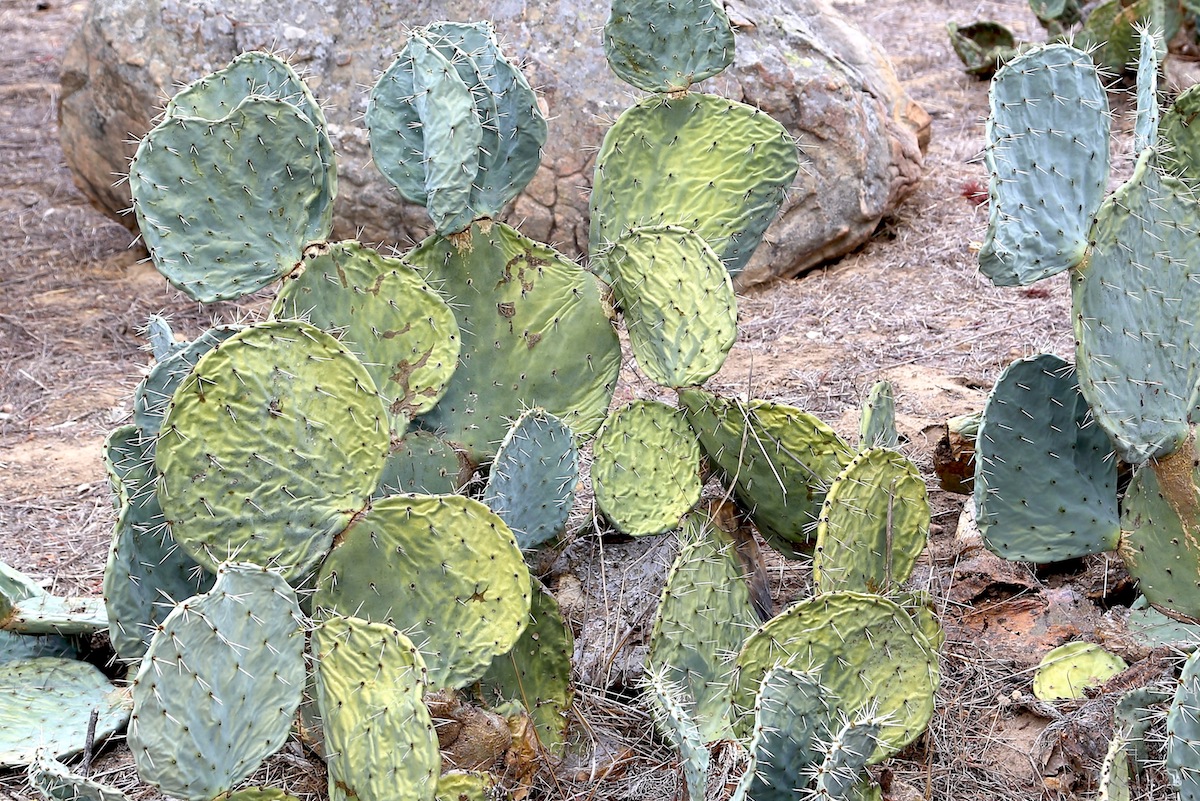
Wrinkled leaves: "Gasp! I'll live on stored moisture until it rains or you finally water me."

Shriveled leaf tips: "I nearly froze!" or "Why did you set me in full, hot sun?"
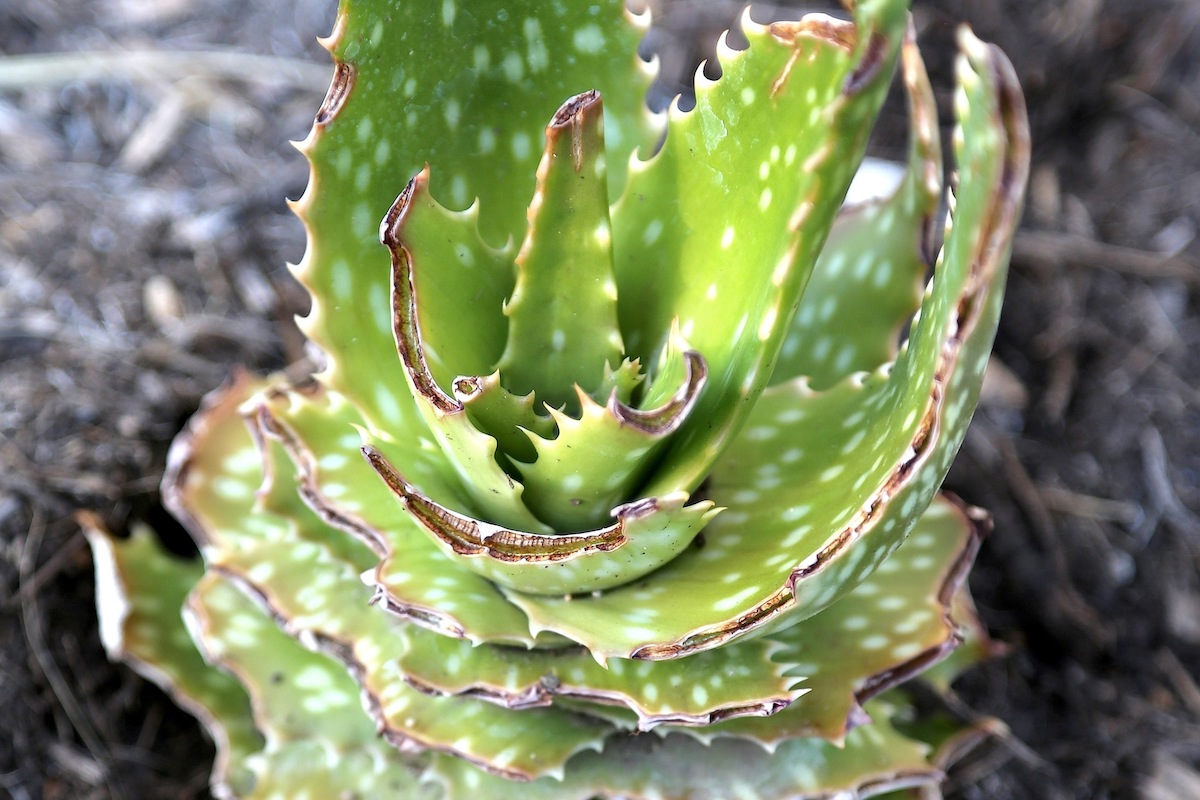
Torn, ragged or perforated leaves: "How could you let me get eaten?"
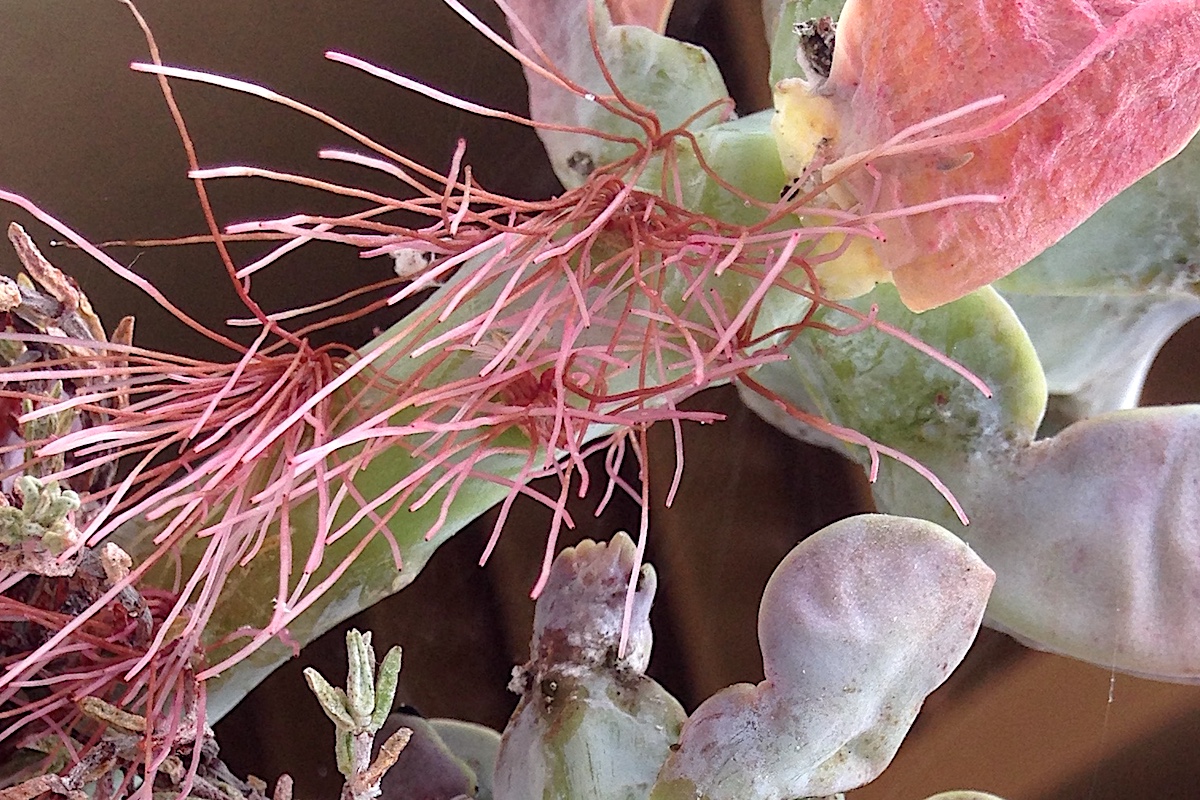
Aerial roots on stems: "Hey! Help me out by taking a cutting!"

Rosettes close themselves: "Conditions aren't great so I'm shielding my core."
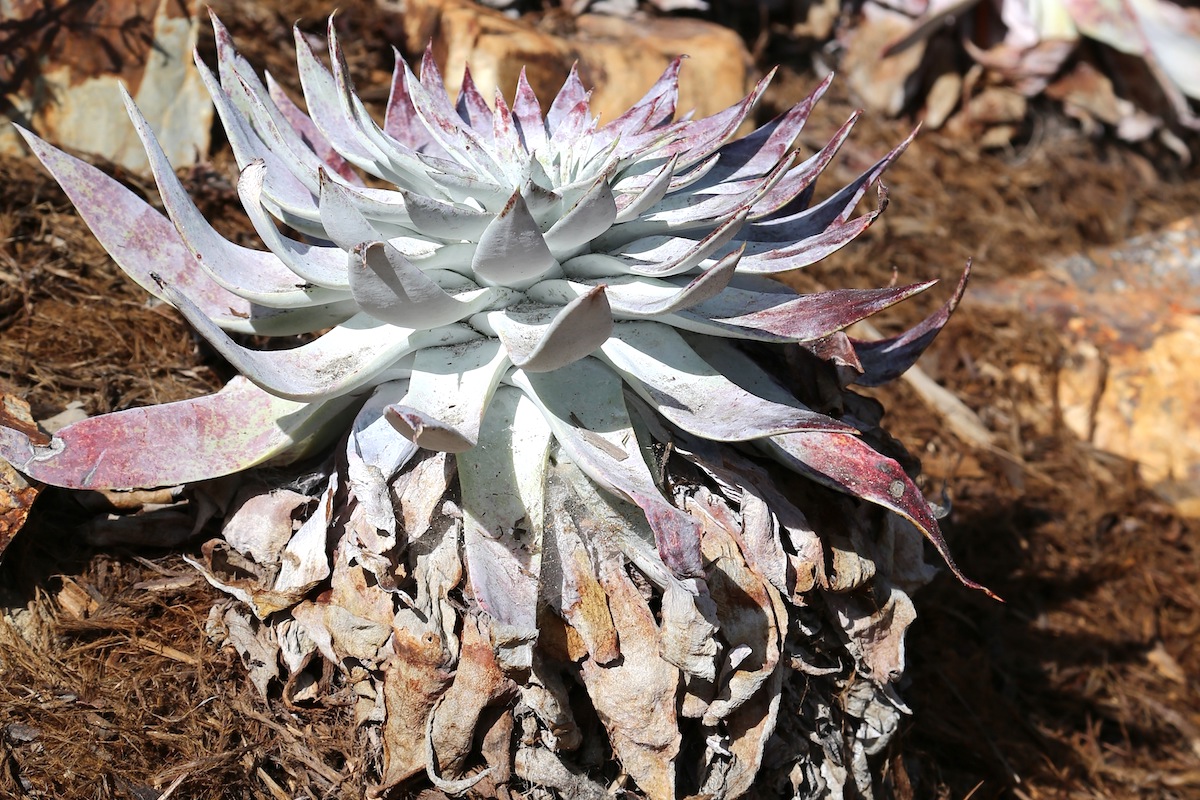
Dry leaves cling to the stem: "I like to shade (or insulate) my trunk."
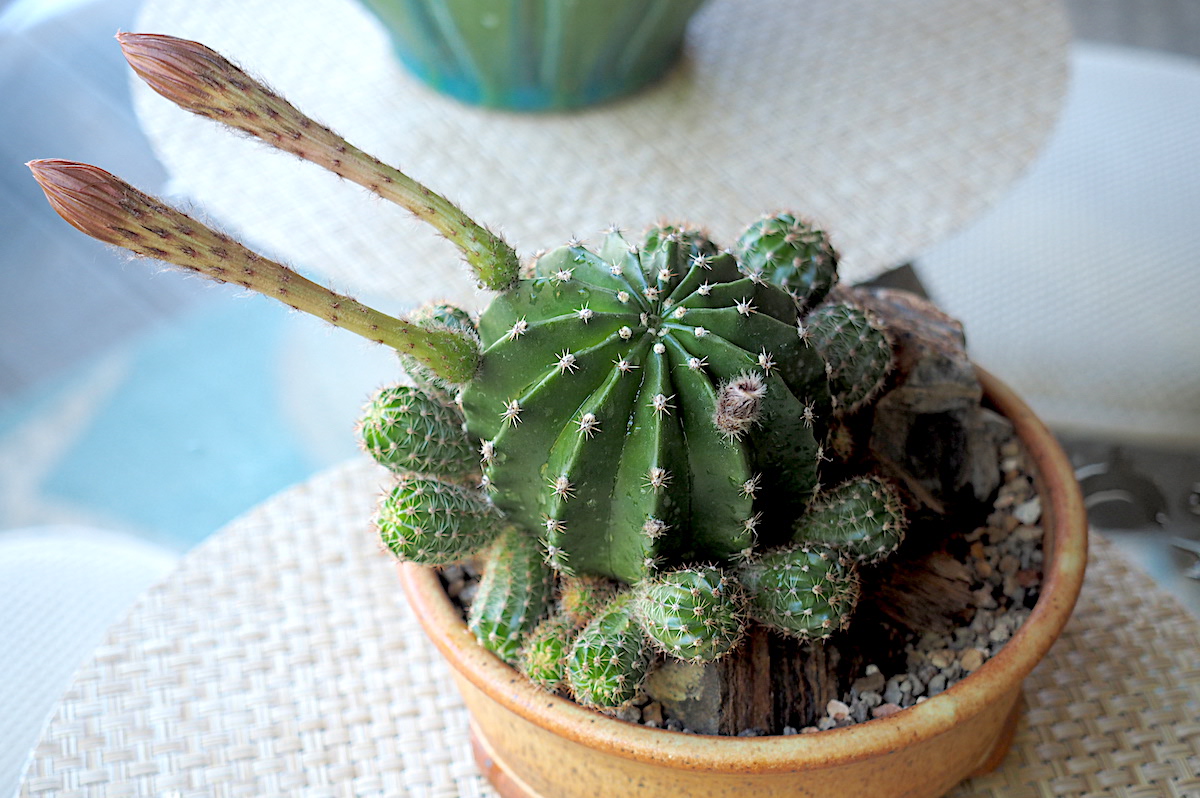
Growth that leans: "I'm certain the sun's over there."
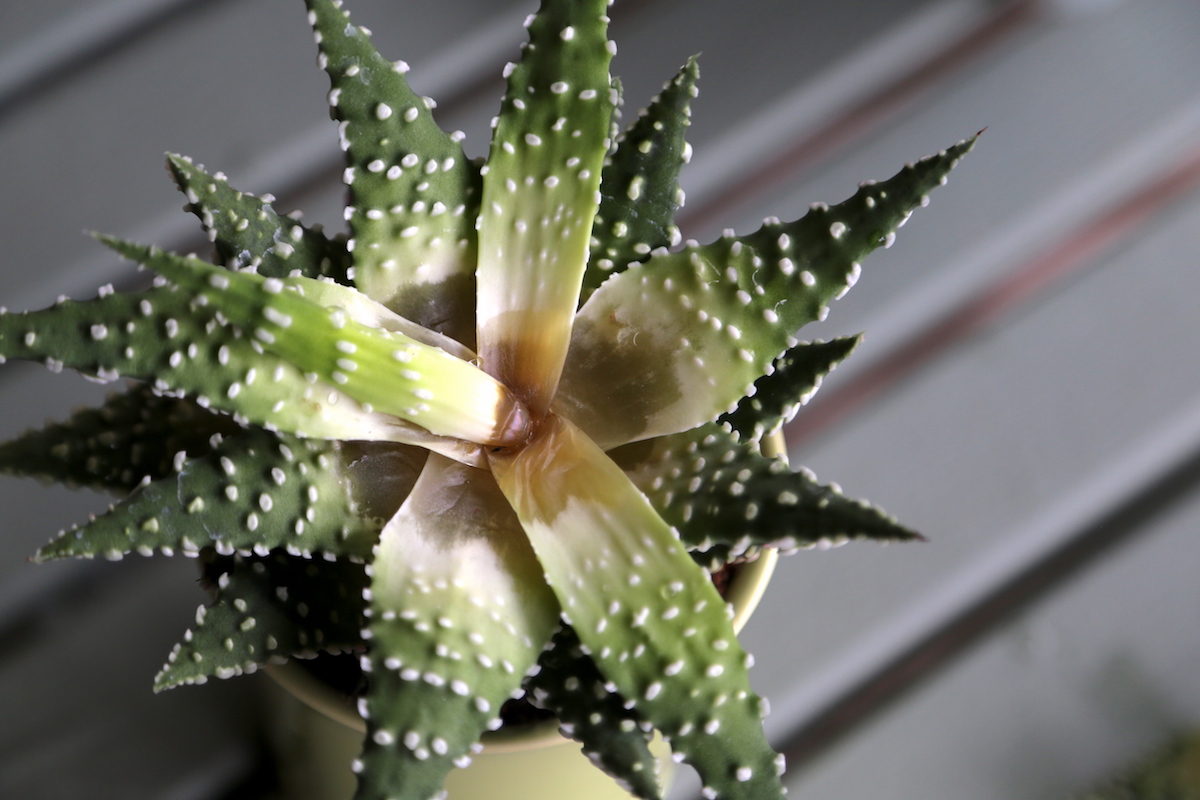
Leaves darken near stem: "I'm drowning! You let me rot!"
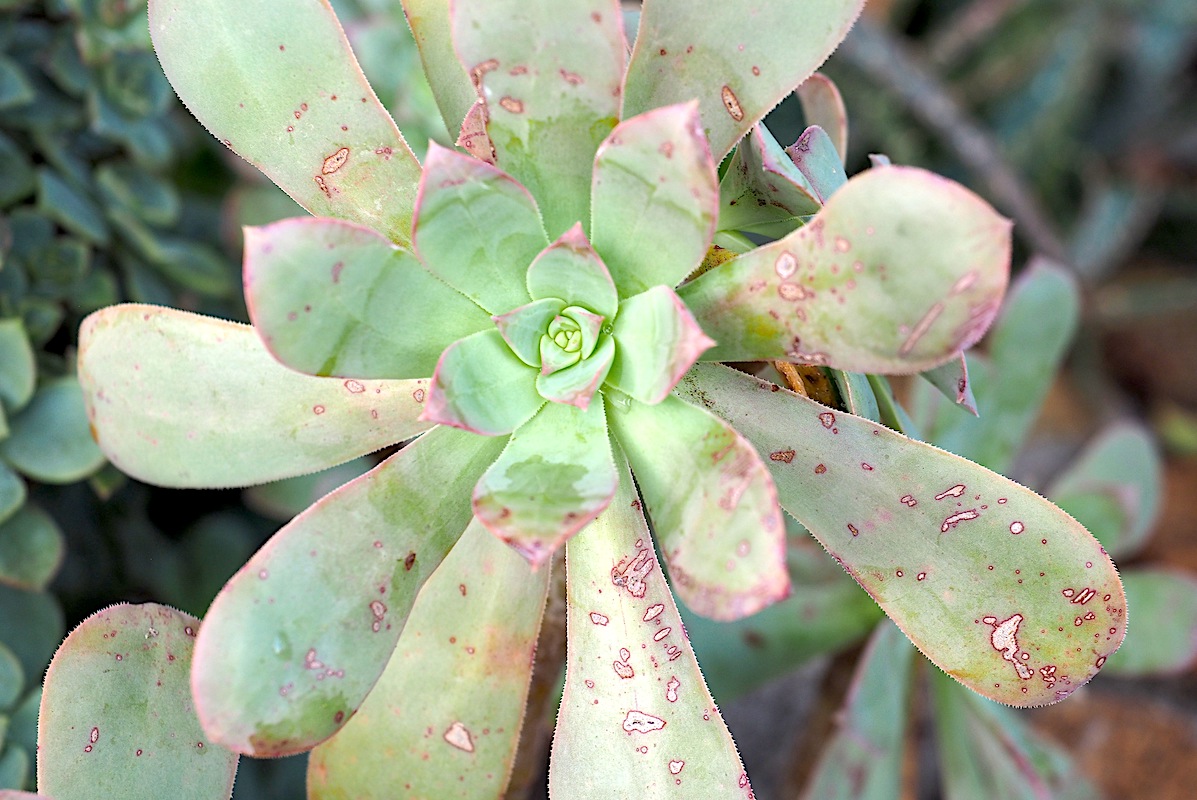
Pitted leaves after storms: "Ouch! Hail!"
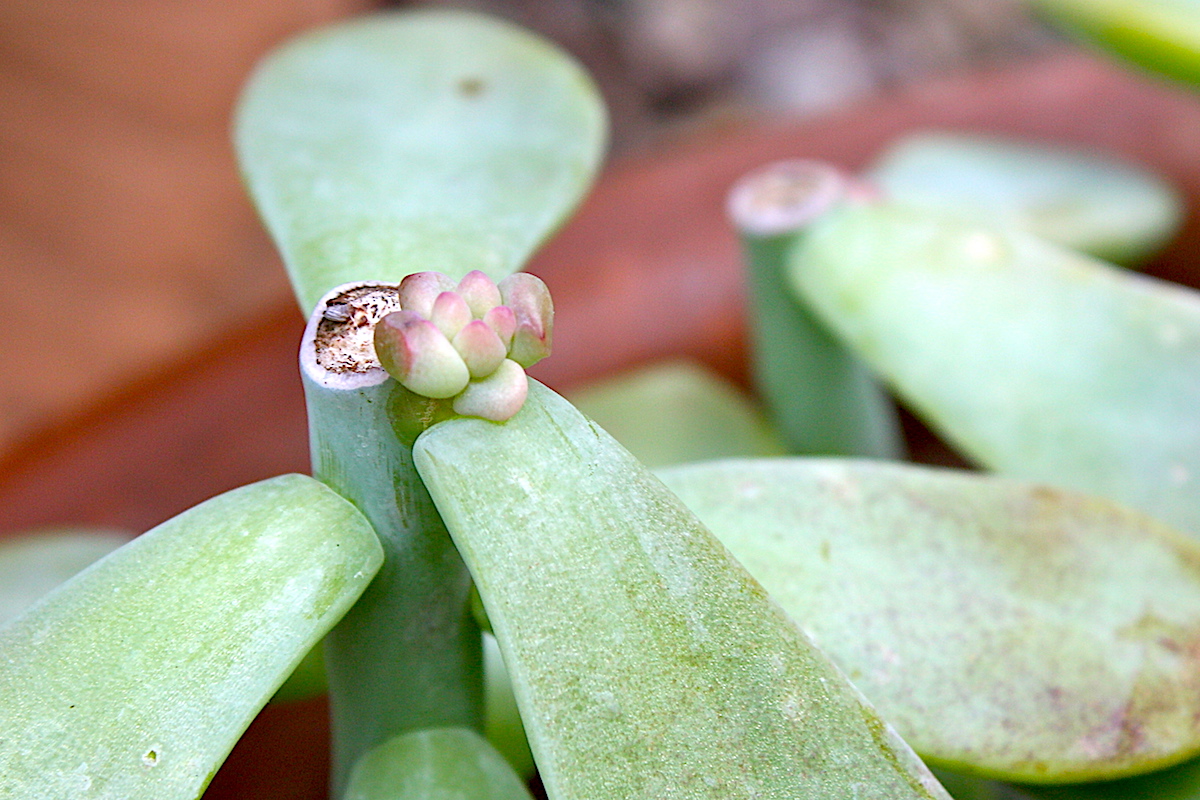
Tiny new leaves at cut end: "Right?! Aren't they darling?!"
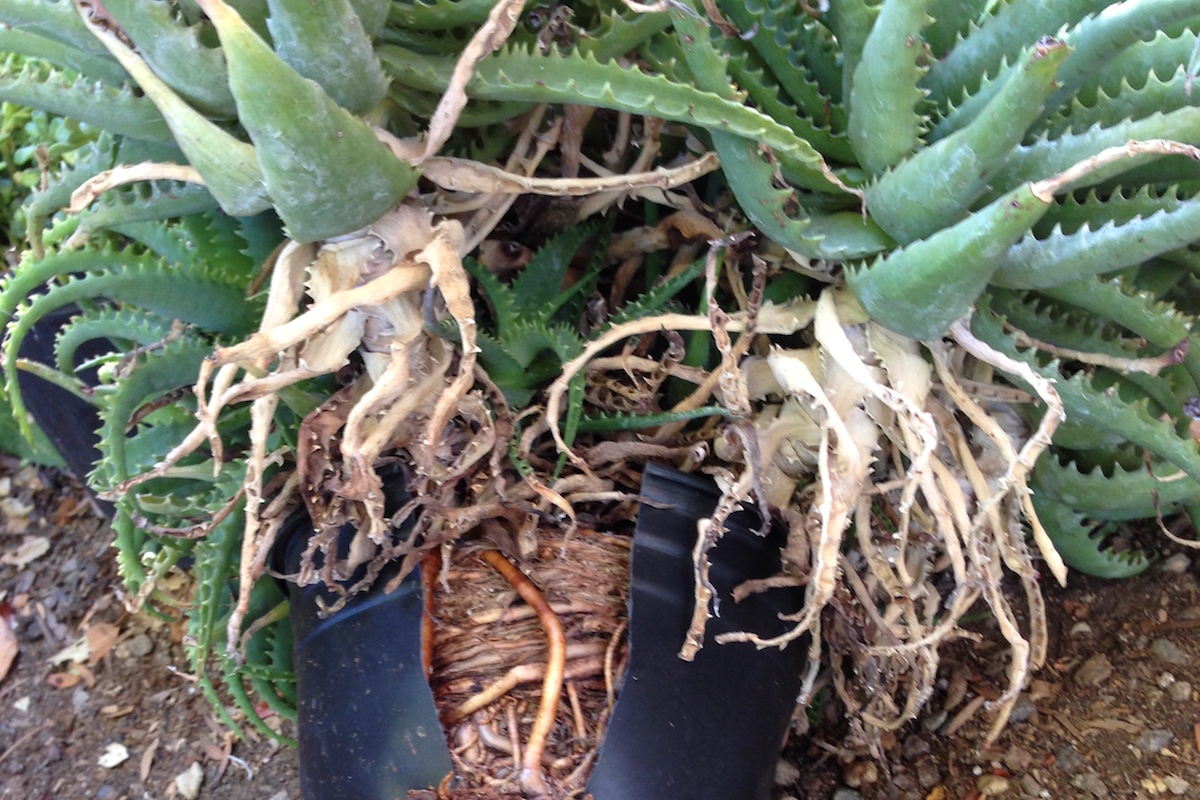
Roots break or escape pot: "Dude, you ever gonna plant me?"

Brown or beige patches: "That sun is HOT. I could use some shade. Just sayin'."
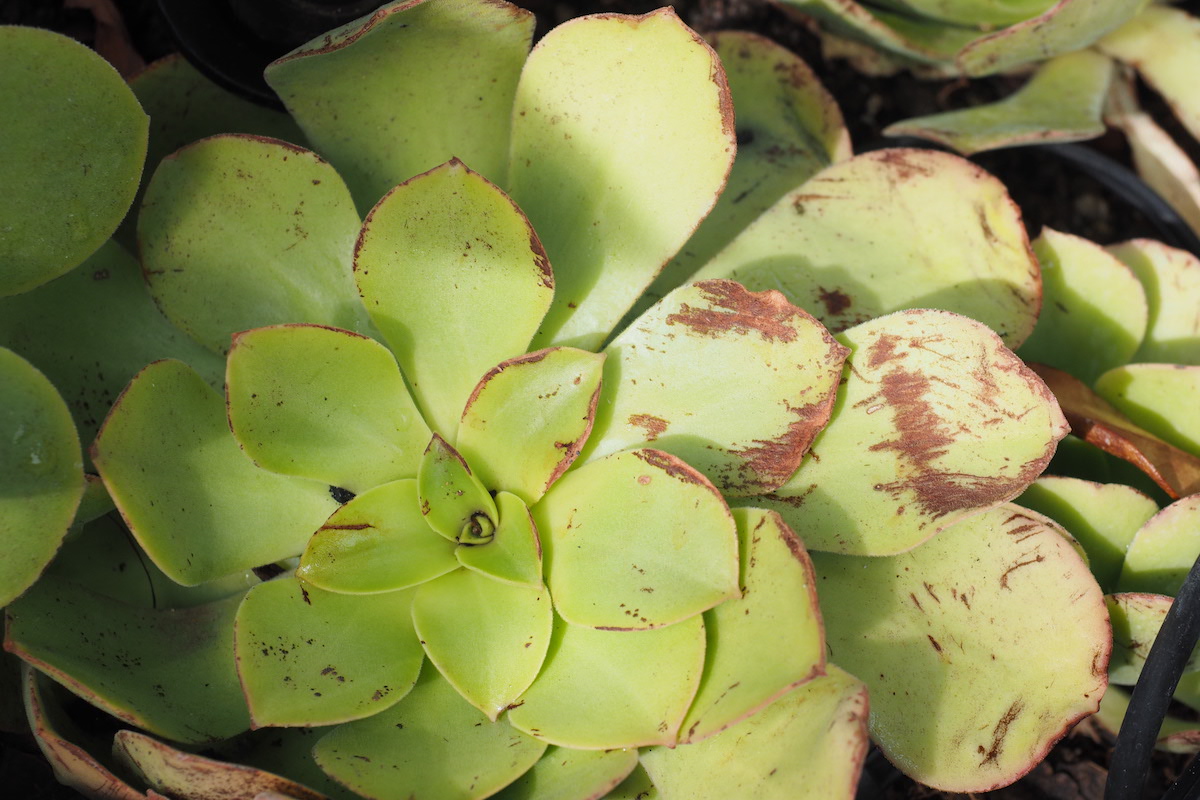
Brown marks on aeoniums: "You should have handled me more gently."
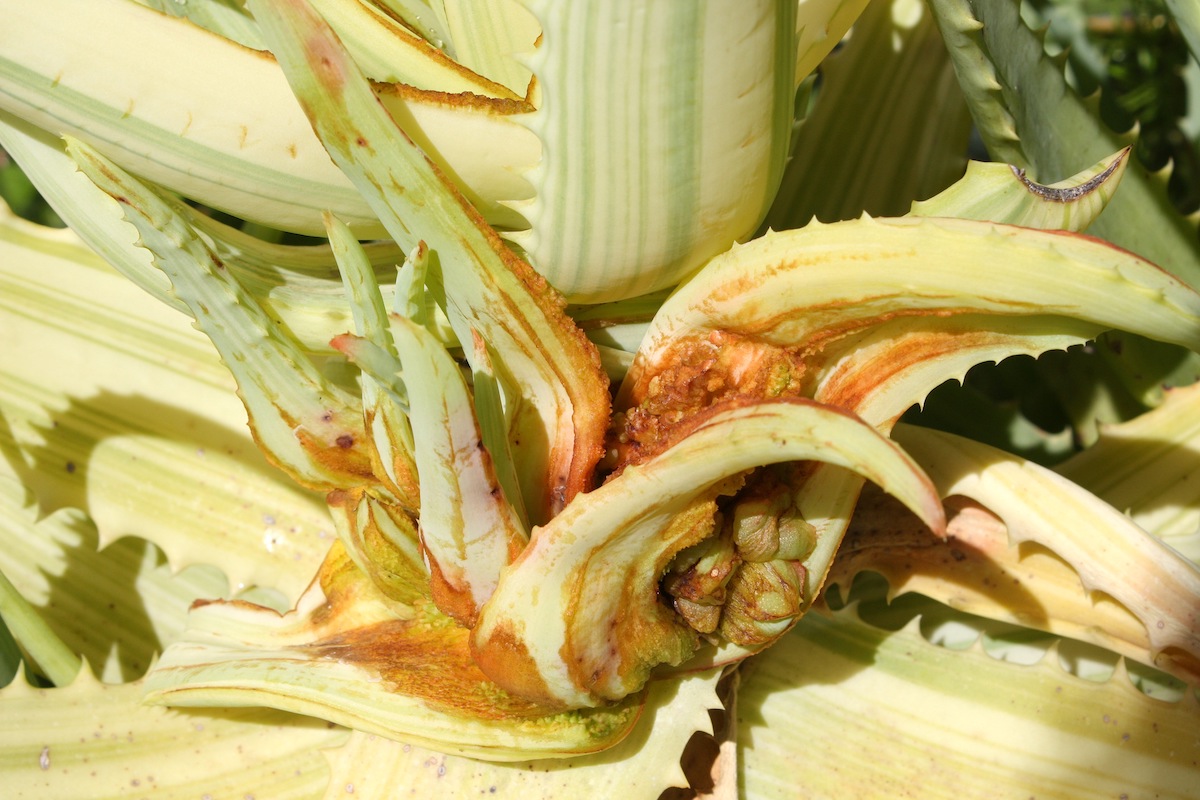
Cancerous, bubbly growth on aloes: "Eek! I've got aloe mite! Get it before it spreads!"
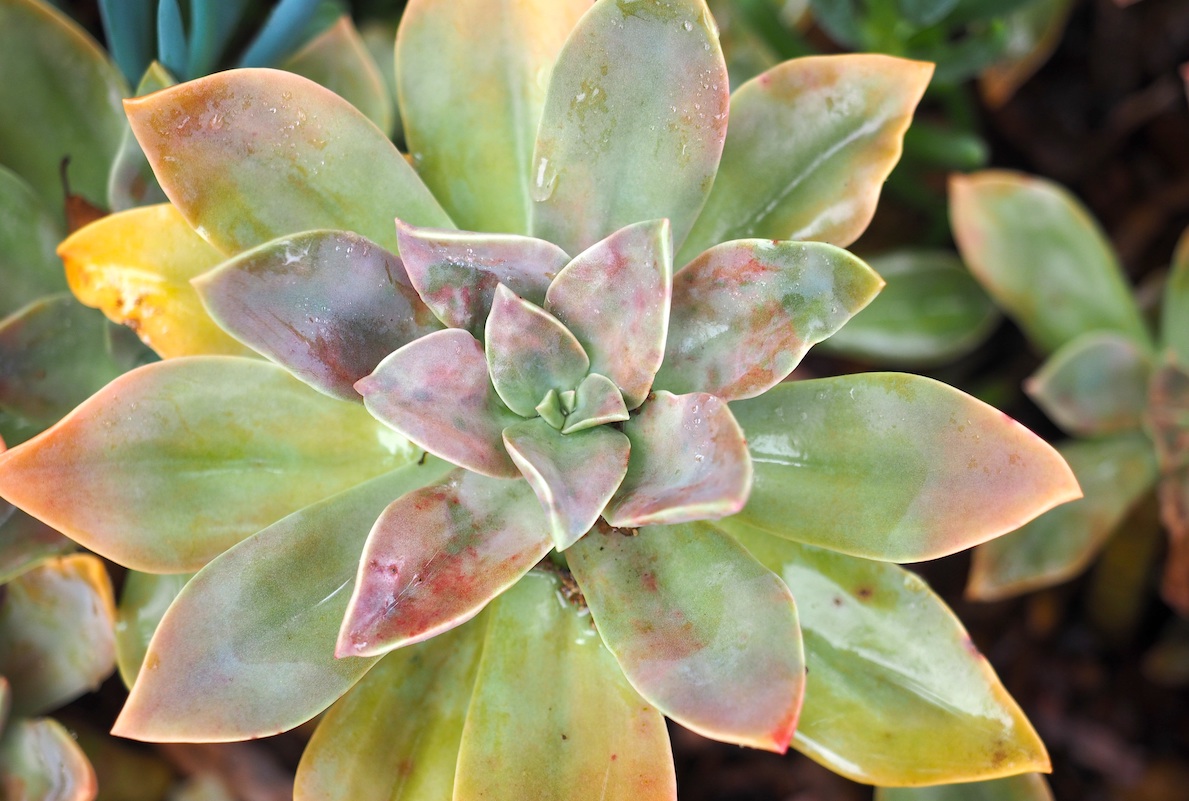
Colorful leaves become blotchy: "No worries, I'm just getting more (or less) sun."
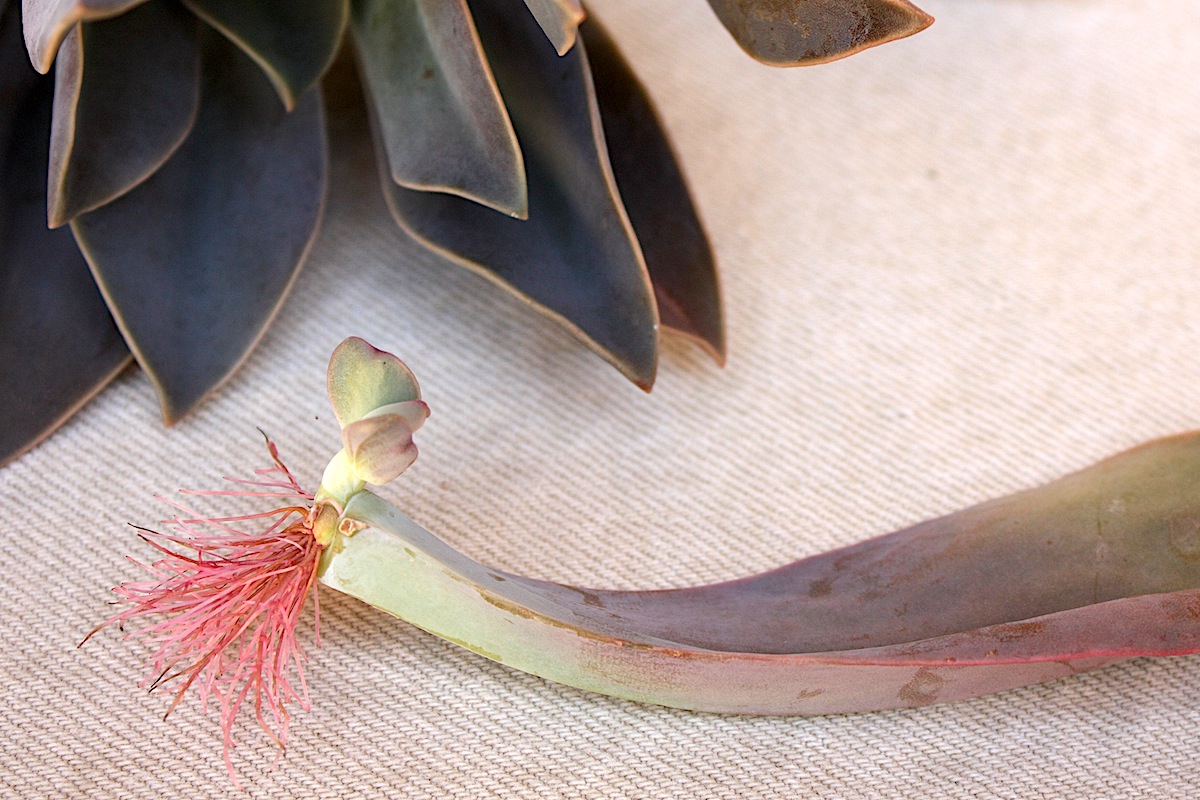
Leaves pop off easily: "Why so upset? I'm trying to have a baby."
Can you think of more ways succulents tell you what they need? Have questions? Share your observations in the Comments below!
See Tina in My Videos
NEW on YouTube, watch Tina slice and re-root large echeverias.
On my Instagram page: Aug., 2019: Tina shows part of her private collection. Oct., 2018: Tina explains how to water lithops at the annual Palomar Cactus & Succulent Society sale at the San Diego Botanic Garden.
On my YouTube channel, Tina shows some of the plants she's selling at the San Diego Cactus & Succulent Society sale
Learn More
Concerned about your plants? Find help on my YouTube channel: Oh No! Something's Wrong With My Succulent! and here on my site:
Uh-oh, Is My Succulent Sick? Common pests, diseases and problems, plus solutions
Succulent Pests, Diseases and Problems Keep your succulents healthy, happy and looking their very best WEEVIL ALERT: The agave snout-nosed weevil is a major pest in ever-increasing numbers. Don’t wait for signs of infestation; take preventative measures NOW to protect your agaves, furcraeas, yuccas, beaucarneas and mangaves. Please don’t let your yard become a breeding ground for pests that move…

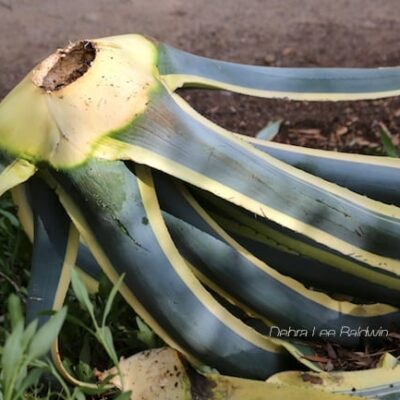
Wow! Those 16 tips apply to my succulents. Thanks Debra for sharing. Now I know the problems with my succulents. 😃🌵👍💕
I love the way you communicate in the simplest terms. 😀 Although I’ve been growing these beauties for 20+ years, I still need a refresher course from a plant’s perspective for help. Thank you so much. Heading out to the garden, my friends are calling 🙂
A.
Hi Alexandra — Thank you for the lovely comment. Tina’s approach is super simple yet also complex and profound…which tends to be true of most wisdom, I’ll bet!
My succulents damaged by hailstorms, is there way to rescue them or hope they will recover itself?
It depends on the succulent and how thick the leaves are, but yes, succulents generally recover from hail damage. New growth from the center of the plant hides older, damaged leaves, which naturally die and fall off over time.
I’d like to know more about aerial roots and taking a cutting. Do I cut the stem that is putting out the aerial roots? Should it be more of a beheading? Or should I cut low down towards the dirt? And then do I let it callous per usual and plant?
Hi Dori — So many stem succulents produce aerial roots, it’s difficult to generalize, but if you keep in mind that roots want to be in the ground, that’ll help. Although the rule of thumb is to only cut as much stem as needed for the cutting to stand upright when planted, I sometimes will dig a shallow trench and lay a longer cutting that’s feathered with aerial roots into it, root side down, then bury it with the rosette at the tip above the soil. As for callousing, yes, always a good idea (although not the end of the world if you forget)!
Thanks so much!
Great tips in this, much appreciated!
I just want to thank you for all of the advice and enthusiasm. When I’ve posed questions on Facebook, you’ve always responded so quickly and with the perfect advice. Thank you.
You’re very welcome, Miranda! Thank YOU for the lovely comment. Debra